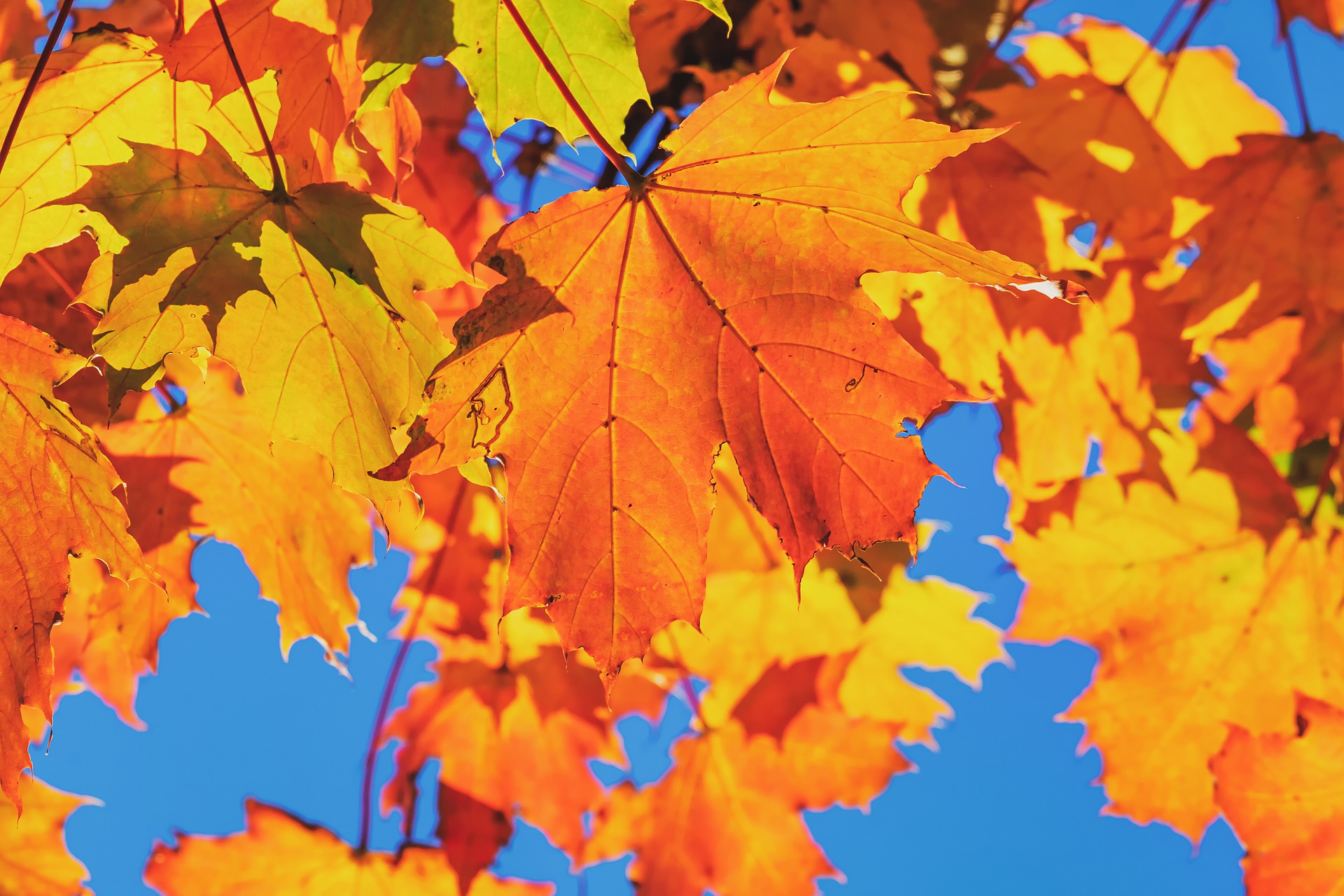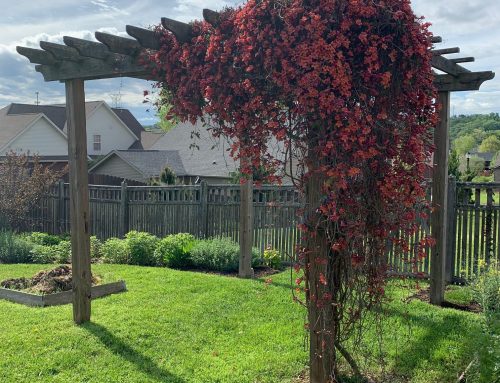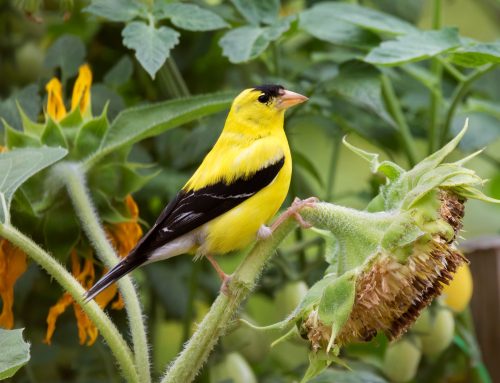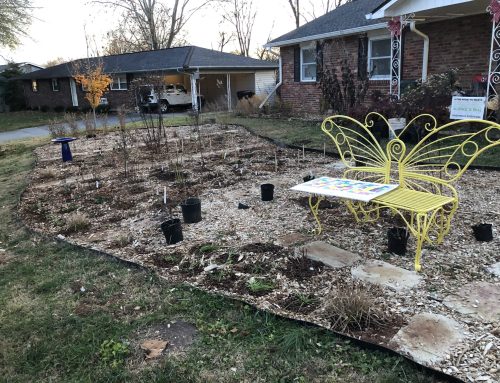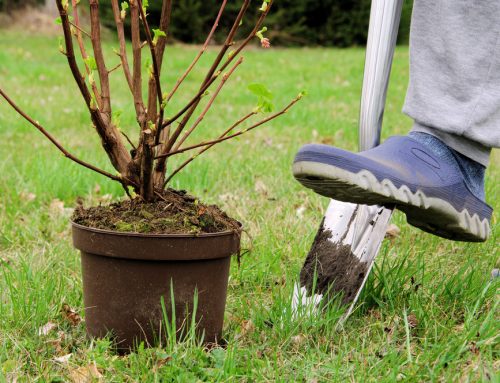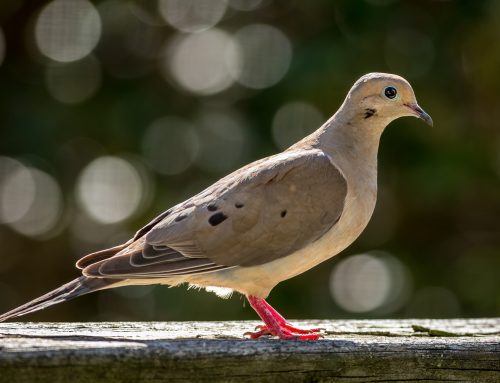by Karin Beuerlein
In my last post, I mentioned taking inventory of the native plants in my yard based on entomologist Doug Tallamy’s research. You can draw a straight line from more native plants to more native insects to better habitat for birds.
Comparing my yard to Tallamy’s list of the best things to plant, I’d say a fair grade on my backyard report card would be a C. Could be worse, but could be much better. Ugh.
The Assessment
Our property is just under half an acre, and from the moment we moved in, I wanted to build gardens and eliminate as much lawn as possible. I started with a front garden, which bled around into some backyard borders; then, my husband and I bought the lot behind us and installed a perimeter of trees and large shrubs all at once—a big project. All told, I had added 32 trees and shrubs.
But when I tallied them up, I realized that only 13 were native to the Southeast:
- Serviceberry
- Redbud
- Sweetgum
- Yellowwood (2)
- Sourwood
- Weeping Eastern white pine (2)
- Oakleaf hydrangea (4)
- Ninebark
I also had a few conifers technically native to North America: a weeping white spruce and two weeping Alaska cedars. (I have a thing for sad evergreens.)
But the rest were Asian or hybrid plants of varying value to wildlife. The Japanese cryptomeria, Japanese ‘Thunderhead’ pines, and Nellie Stevens hollies were active nesting sites for robins, house finches, and mockingbirds, and low-growing star magnolias often had song sparrows and mourning doves hiding beneath. But although a ginkgo and Japanese maple were lovely to look at, birds didn’t go near them. They had no reason to—no food, no cover, no suitable nesting sites. Whoops.
Powerhouse Trees
Compare that to Tallamy’s list of the native species most valuable for producing the insects that birds need to feed their young. These he calls “powerhouse” trees—they have a broad ability to support wildlife through caterpillar production, nesting sites, mast or berries for birds and mammals, and blooms for native pollinators. They’re listed in descending order according to how many species of butterfly and moth caterpillars they produce, from the oaks at 557 to chestnuts at 125.
- Oak
- Willow
- Cherry/plum
- Birch
- Poplar/cottonwood
- Crabapple
- Blueberry/cranberry
- Maple/box elder
- Elm
- Pine
- Hickory
- Hawthorn
- Alder
- Spruce
- Ash
- Basswood/linden
- Filbert/hazelnut
- Walnut/butternut
- Beech
- Chestnut
Of all my natives, which I picked mainly for ornamental value, only the pines are found on this list. That gave me pause. So I took a second look at my list of natives and assessed their wildlife value:
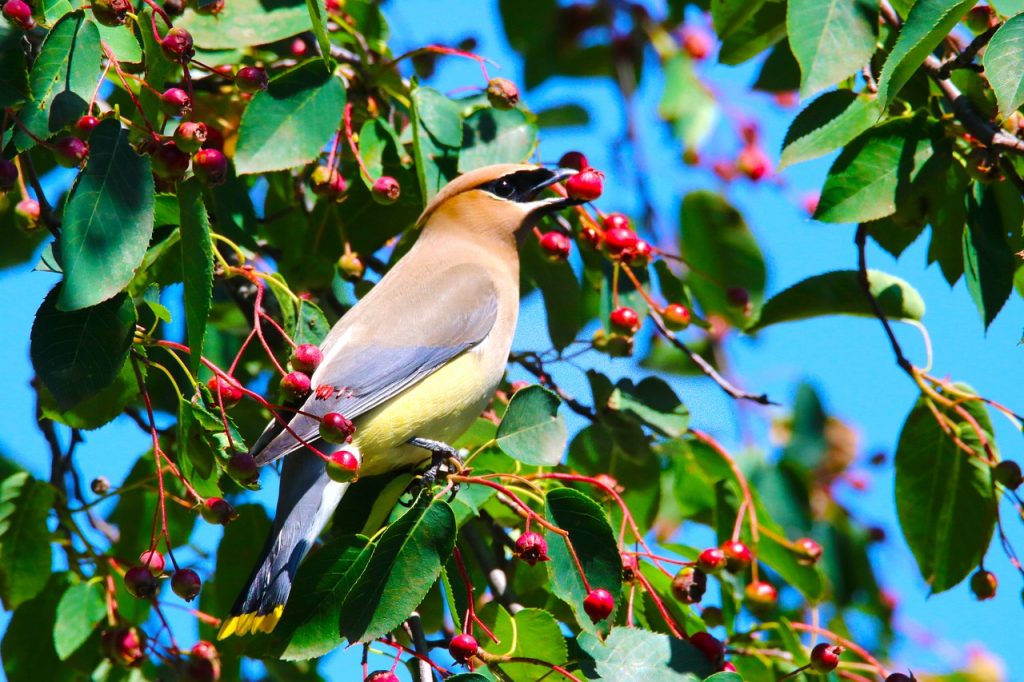
Image by DivaDan from Pixabay
Serviceberry
This one’s a solid choice. Its blooms support native bees early in the season, its berries feed cedar waxwings and many other bird species, its branches offer enough cover for mockingbirds to nest, and it supports 124 species of caterpillars—just shy of the powerhouse list. One of those caterpillars is that of the red-spotted purple butterfly, which I see reliably in my yard every year. Lovely.
Redbud
Though the literature doesn’t point to heavy caterpillar production for the redbud, it certainly makes a lot of bird food in my yard. Something is always chewing on it, including tussock moths, webworms, and—as my husband and I have both learned the hard way—stinging saddleback caterpillars. Robins and mourning doves nest here.
Sweetgum
Some people don’t like the spiny fruits that drop to the ground, but I don’t mind them. Goldfinches are crazy about them. Sweetgum is also the host plant for the luna moth and the promethea moth.
Sourwood
The bees love it when it blooms, but beyond that, not a prolific wildlife supporter. It does apparently attract ugly fall webworm, which can in turn attract beautiful yellow-billed cuckoos, but that happy event has not yet come to pass.
Yellowwood
Also a good choice for pollinators, but they only bloom every three years or so, and supposedly caterpillars don’t find them appealing. They’re beautiful trees, but I’ll have to live with them a while to see if they go any deeper than their looks.
Weeping White Pine
On Tallamy’s list. Provides multiple benefits and year-round food for wildlife, from caterpillars to seeds.
Oakleaf Hydrangea
Gives cover and offers some nectar and pollen. I read somewhere that the peeling bark offers places for beneficial insects to overwinter.
Ninebark
Attracts pollinators and is a good source of caterpillars for birds, as 50 species of butterflies and moths use this plant to reproduce.
I already had a large number of native perennials, like joe-pye weed, aromatic aster, and giant coneflower, keeping my native species count respectable, but they accounted for less biomass than the trees. Also, they weren’t likely to provide as many caterpillars early in the season when birds are breeding.
My yard wasn’t exactly a biological dead zone, but my strategy certainly could use improvement if I wanted to nurture more birds.
The Plan
It was clear I needed to swing the plant balance back toward productive natives to keep my resident birds happy and maybe lure some of my old favorites back. I had four steps I wanted to take immediately to boost the birding value of my yard:
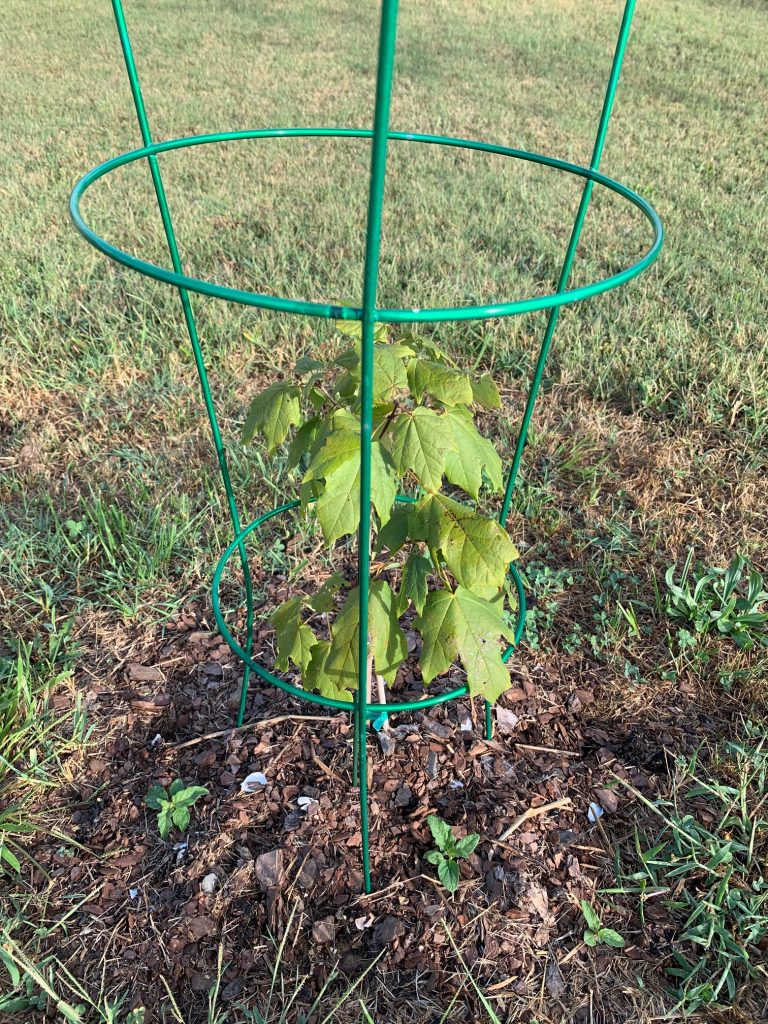
- Add at least one powerhouse tree. The center of my garden, yet to be installed, was supposed to include more non-native specimen trees. I purged that plan and decided on a complete redesign centered around a Harvest Moon® sugar maple, a heat- and drought-tolerant variety that does well in the Southeast, provides seeds for birds, and produces 285 species of caterpillars. I haven’t added the whole garden yet, but I did put in the sugar maple. Right now, it’s a foot tall, so “powerhouse” is maybe a stretch.
- Replace key exotics with natives. My ginkgo was stuck in a wet spot and got root rot; a Chinese juniper had turned half brown; and a purple smoketree just annoyed me for some reason. So: off with their heads! We replaced the ginkgo with a bald cypress that loves flooding and hosts a type of sphinx moth; the juniper with an alternate-leaf dogwood that hosts the spring azure butterfly and produces abundant berries; and the smoketree with a bottlebrush buckeye that attracts tons of pollinators and provides dense cover.
- Add insect-producing and insect-attracting shrubs. This year’s additions: arrowwood viburnum, mapleleaf viburnum, black chokeberry, summersweet, buttonbush, Virginia sweetspire, and southern bush honeysuckle. The viburnums and chokeberries in particular are potent caterpillar producers.
- Add a diverse perennial groundcover. The installation of so many trees at once left a sea of mulch connecting them—and a huge weeding job. I saw a big opportunity to add naturalizing native perennials to the whole area in place of traditional groundcovers, stifling weeds and attracting insects. I’ll write more about this coming up.
I tackled all four projects this year, totaling about 250 plants. And 250 holes to dig. (Did I cry? Yes. More than once. But it was worth it.) I can definitely say this: the insect life in my garden has been noticeably richer this season—and an endless source of entertainment. Critters came that I’d never seen before, including Halloween pennants, four-toothed mason wasps, golden northern bumblebees, and robber flies. This made good eating for phoebes, tree swallows, blue-gray gnatcatchers, and yellow warblers—and my first-ever backyard common yellowthroat. I don’t know whether they would have come anyway without the addition of so many insect-producing plants, but they were here, and I’m glad.
As you know, my holy grail is the breeding Carolina chickadee. I need 70% native species in my yard to satisfy a chickadee’s need for caterpillars during nesting, and my total after plant rehab now stands at 63%.
Can chickadees do math? When spring arrives, I’ll let you know.
